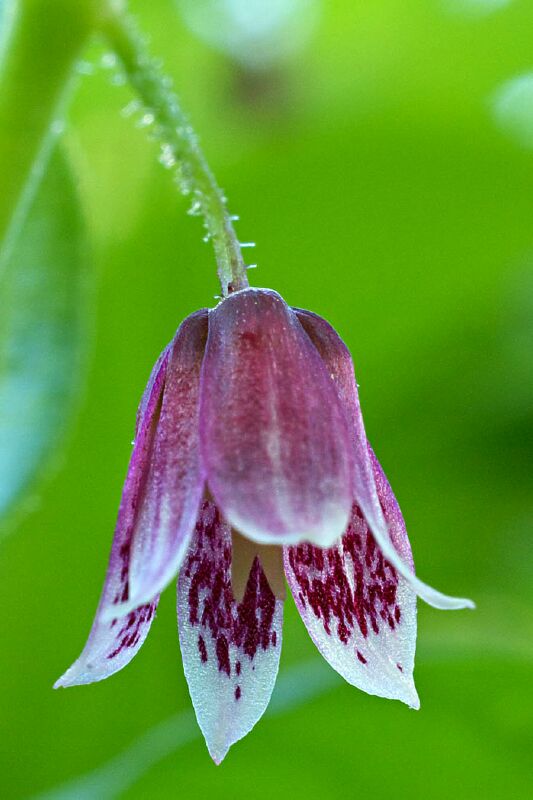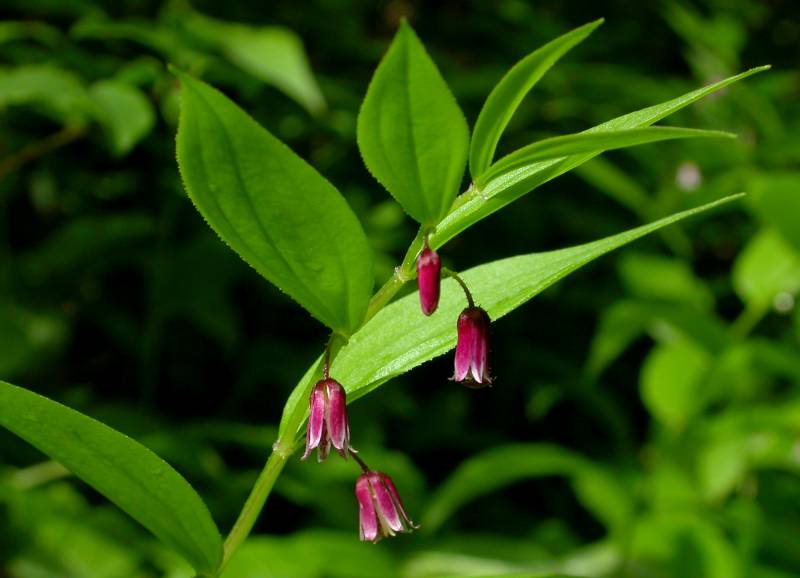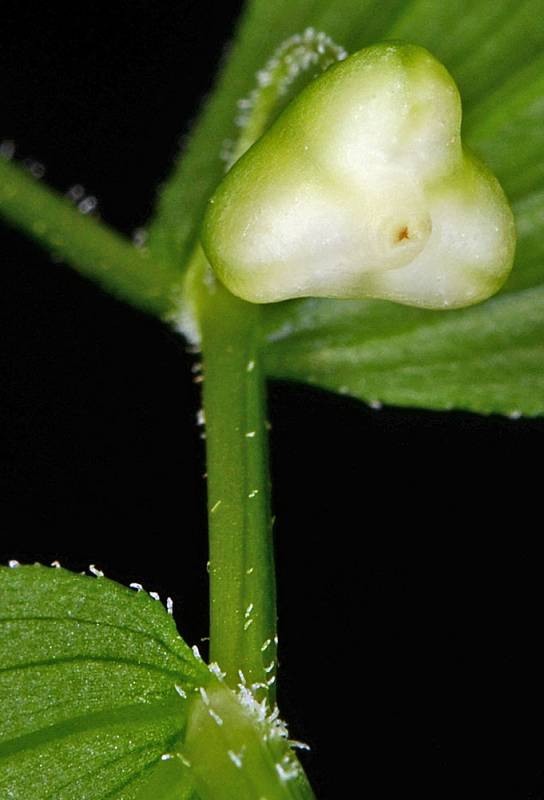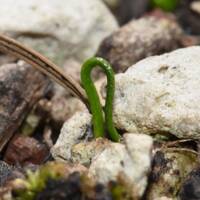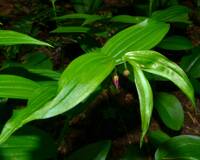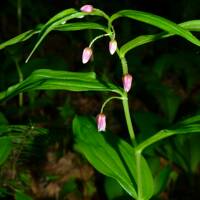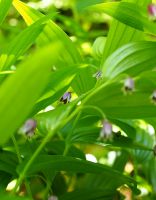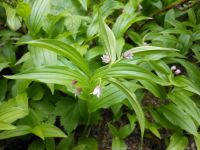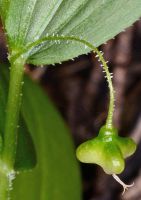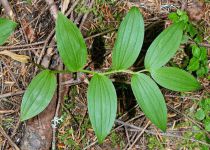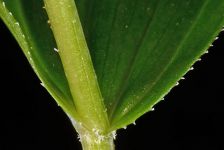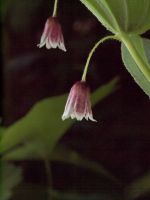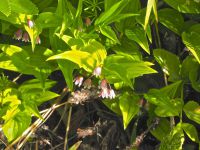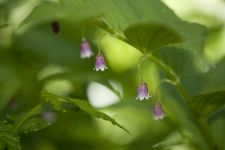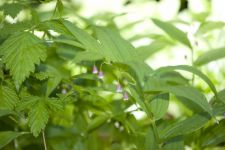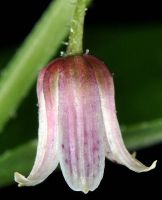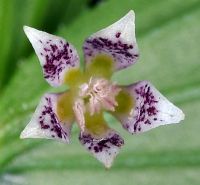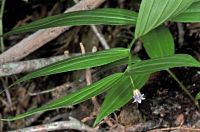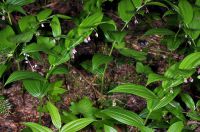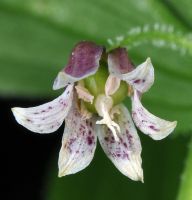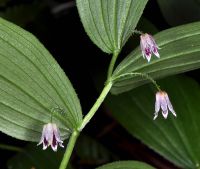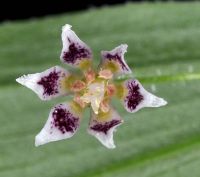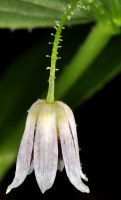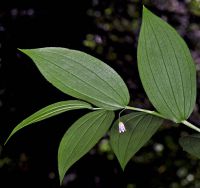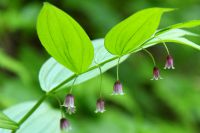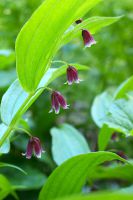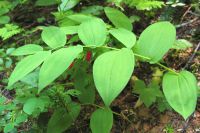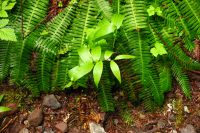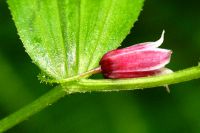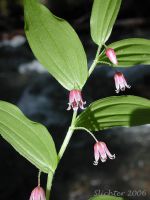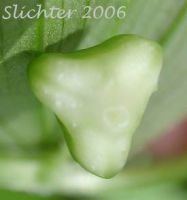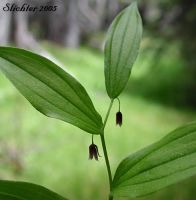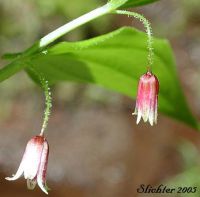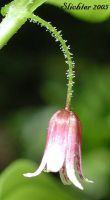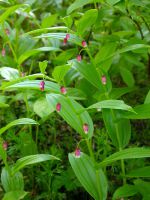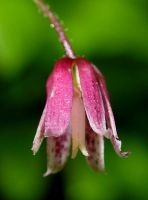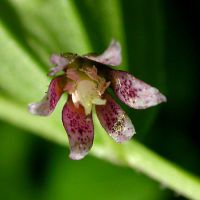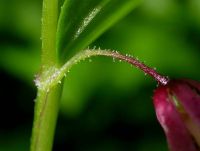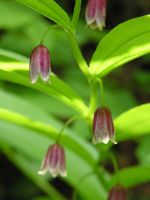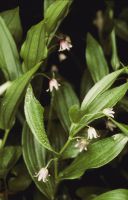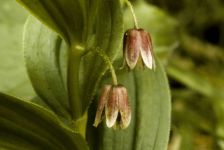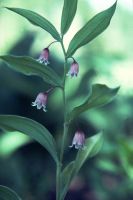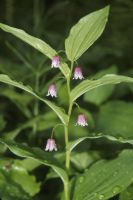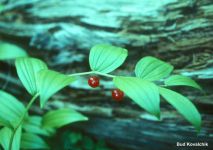Distribution: Occurring on both sides of the Cascades crest in Washington; Alaska to Oregon, east to Alberta and Montana (but not Idaho); also from the Great Lakes region east to the Atlantic Coast.
Habitat: Streambanks and damp woods at moderate to high elevations in the mountains.
Flowers: June-August
Origin: Native
Growth Duration: Perennial
Conservation Status: Not of concern
Perennials from slender, occasionally matted rhizomes; stems simple or sometimes branched, usually 15-40 cm or sometimes more, glabrous with sparse fringe of pubescence on nodes.
Leaves sessile, ovate-elliptic, 5-10 cm long and 2-4.5 cm broad, base rounded, margins finely glandular-pubescent, apex acute to acuminate.
Inflorescence 1-flowered, on slender peduncle joined to stem for length of 1 internode and arising at next leaf axil; combined peduncles and pedicels curved backwards, 9-20 mm, glands absent or not easily seen; pedicel uncommonly sharply bent at joining point with peduncle, coarsely pubescent.
Flowers 1 or rarely 2 per axil; perianth campanulate; tepals slightly spreading but not curved backwards, white to greenish yellow mostly in distal 1/3, streaked or spotted with light pink to reddish purple, narrowly oblong-lanceolate, 6-10 mm; stamens 5-8 mm, anthers 2 mm with 2-pointed apex; ovary superior and 3-chambered, style slender and 3.5-4 mm with weakly 3-lobed stigma.
Berries reddish purple to red, nearly globose, 6-9 mm; seeds 2.5-3 mm, pale yellow, elongate, grooved lengthwise.
Publication: Phytologia. 74: 187. 1993.
Streptopus lanceolatus (Aiton) Reveal var. curvipes (Vail) Reveal [KZ99]
Streptopus roseus Michx. [HC]
Streptopus roseus Michx. ssp. curvipes (Vail) Hultén
Streptopus roseus Michx. var. curvipes (Vail) Fassett [HC]
Uvularia lanceolata Aiton
PNW Herbaria: Specimen records of Streptopus lanceolatus in the Consortium of Pacific Northwest Herbaria database
WA Flora Checklist: Streptopus lanceolatus checklist entry
OregonFlora: Streptopus lanceolatus information
E-Flora BC: Streptopus lanceolatus atlas page
CalPhotos: Streptopus lanceolatus photos

